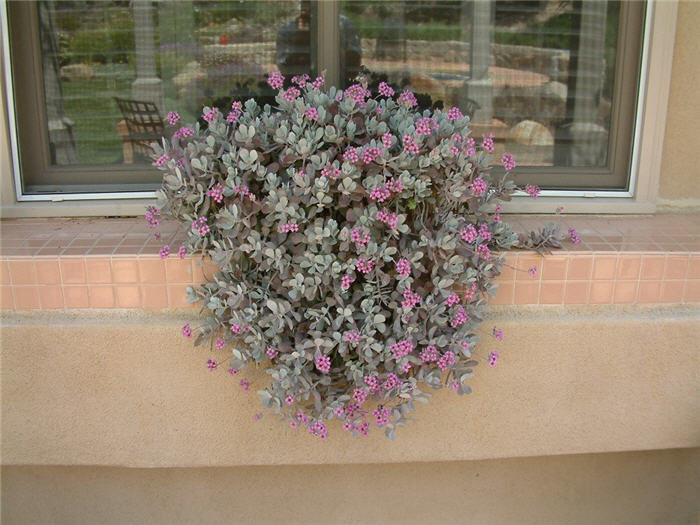| Botanical Name: Sedum sieboldii | |
| Common Name: October Daphne |

-
Anatomy
-
Culture
-
Design
Plant Type
Ground cover, Succulent
Height Range
Under 1'
Flower Color
Pink
Flower Season
Summer, Fall
Leaf Color
Blue Green, Grey Green
Bark Color
n/a
Fruit Color
n/a
Fruit Season
n/a
Sun
Full, Half
Water
Low
Growth Rate
Slow
Soil Type
Sandy, Clay, Loam, Rocky, Unparticular
Soil Condition
Average, Poor, Well-drained, Dry
Soil pH
Neutral
Adverse Factors
n/a
Design Styles
English Cottage, Japanese, Mediterranean, Ranch, Spanish
Accenting Features
Unusual Foliage
Seasonal Interest
Summer, Fall
Location Uses
Perennial Border, Patio, Raised Planter, Walls / Fences, With Rocks
Special Uses
Container, Mass Planting, Small Spaces, Hanging Baskets
Attracts Wildlife
n/a
Information by: Stephanie Duer
Photographer:
Photographer:
-
Description
-
Notes
This lovely mound-like species splays out from the center like a miniature fountain. It has half-inch rosy flowers in fall and blue-green leaves with matching rosy margins. Frosty temperatures bring out pink in the leaves. Sedum sieboldii grows to 4 inches tall and about twice as wide.
As a group, sedums prefer well-drained soils, including sandy-loam, clay-loam, or rocky soils, as long as it is well drained. In nature, most sedums occur in light shade or partly sunny sites, while a few are also well-adapted to full sun situations. They can tolerate both drought conditions or more frequent watering, but the key is good drainage. Their xeric nature makes sedums popular for use in rock gardens, roof gardens, wall gardens, and living wreaths.